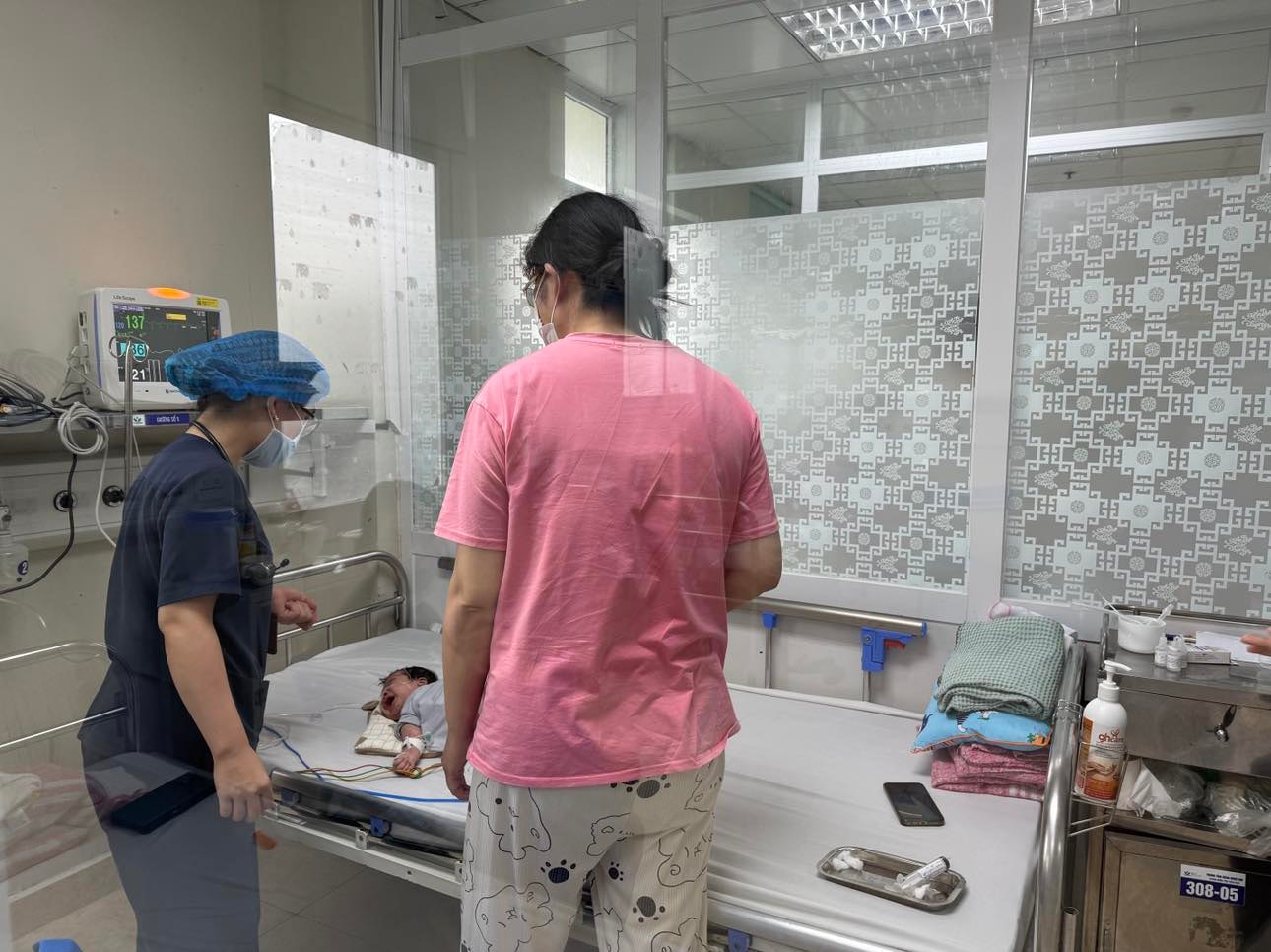This year's whooping cough epidemic has many abnormalities, both in the number of infections and the age of children affected.

Whooping cough is dangerous when co-infected with other viruses.
Having a cough that did not go away after self-treatment at home, patient MTQ (1 month old, from Cao Bang) was transferred from the lower level to the National Children's Hospital in a state of prolonged coughing, cyanosis, and refusal to breastfeed. Upon admission, the child had severe respiratory failure, pneumonia, and had to be placed on a ventilator. The test results were positive for whooping cough and co-infection with RSV virus. The child was treated according to the whooping cough treatment regimen, mechanical ventilation, antibiotics, respiratory support, etc.
After about 1 week of treatment, the patient had improved and was switched to nasal oxygen therapy. The severe whooping cough symptoms had decreased, with only red-face cough remaining, and the coughing spells had become less frequent; pulmonary hypertension and leukocytosis had improved.
Notably, this child is only 1 month old, not old enough to be vaccinated against whooping cough. Through medical history, it is unclear how the child contracted the disease, and no one in the family has shown signs of whooping cough. The child's mother was not vaccinated against whooping cough during pregnancy.
Previously, the National Children's Hospital also recorded a case of a child with severe whooping cough, co-infected with other viruses, including COVID-19. The child had severe respiratory failure, had to be on a ventilator for more than 2 weeks, had to receive intensive antibiotic treatment, and control electrolytes... before the disease improved.
Dr. Dao Huu Nam, Head of the Intensive Care Unit, Tropical Center, National Children's Hospital said: "The number of whooping cough cases is showing signs of decreasing compared to a few weeks ago. At peak times, there were days when the Department treated up to 40 cases per day.
Severe complications of whooping cough will cause heart failure, pulmonary hypertension, even accompanied by pneumonia, co-infection with viruses that make the disease worse.
“If only having whooping cough, the child is at high risk of serious complications, combined with co-infection with other viruses, especially Adenovirus, RSV, COVID-19, makes the disease progress more quickly and become more difficult to control,” Dr. Dao Huu Nam warned.
During peak periods, hospitals must arrange isolation rooms, classify patients, and arrange separate treatment areas for children with whooping cough. In particular, children co-infected with whooping cough and other viruses must be placed in separate rooms to avoid cross-infection with other children.
Is the rate of spread worrying?
Dr. Do Thien Hai, Deputy Director of the Center for Tropical Diseases, National Children's Hospital, commented: "This year, the number of whooping cough cases has increased dramatically. Most of the cases have basic symptoms, but the difference compared to previous years is that the number of cough cases in children under 3 months old accounts for a fairly high rate, up to 2/3 of the children hospitalized. The number of severe cases accounts for 10-20%. Severe cases are those that must be closely monitored with symptoms: long coughing spells, cyanosis, needing oxygen, mechanical ventilation and intervention with other measures."
Regarding the cause of the whooping cough outbreak this year, according to Dr. Do Thien Hai, it is necessary to consider how the whooping cough pathogen is circulating in the community. If mothers and relatives in the family carry the whooping cough pathogen, although they do not show symptoms, they are still a source of infection for children. In conditions where many children do not have antibodies passed on from their mothers, the number of cases will increase.
“Whooping cough is a bacterial disease, so it will spread more slowly than viruses like the flu or COVID-19. For young children, especially newborns, who often stay indoors, in rooms, often have adults visiting. When visiting, talking, laughing, sneezing can accidentally be a source of infection for the baby; because there are people who carry whooping cough bacteria, but do not show symptoms. For babies who do not have antibodies from their mothers, are not old enough to be vaccinated, when exposed to pathogens, the risk of getting sick is completely possible,” said Dr. Do Thien Hai.
During the school year, if older children are fully vaccinated and have a booster at 18 months to 2 years of age, the risk is lower. In fact, whooping cough cases in school-age children are usually very few, mild, and less likely to have serious complications than in younger children.